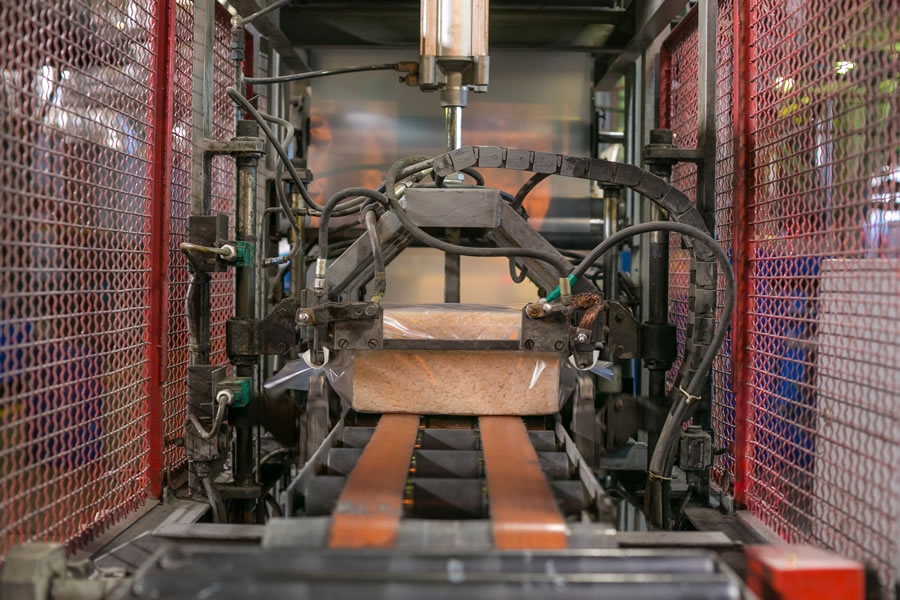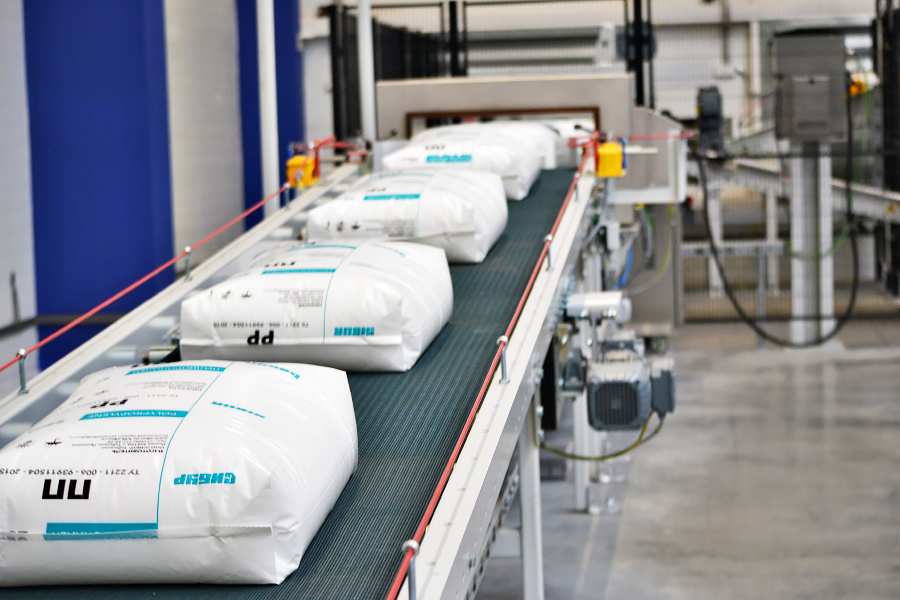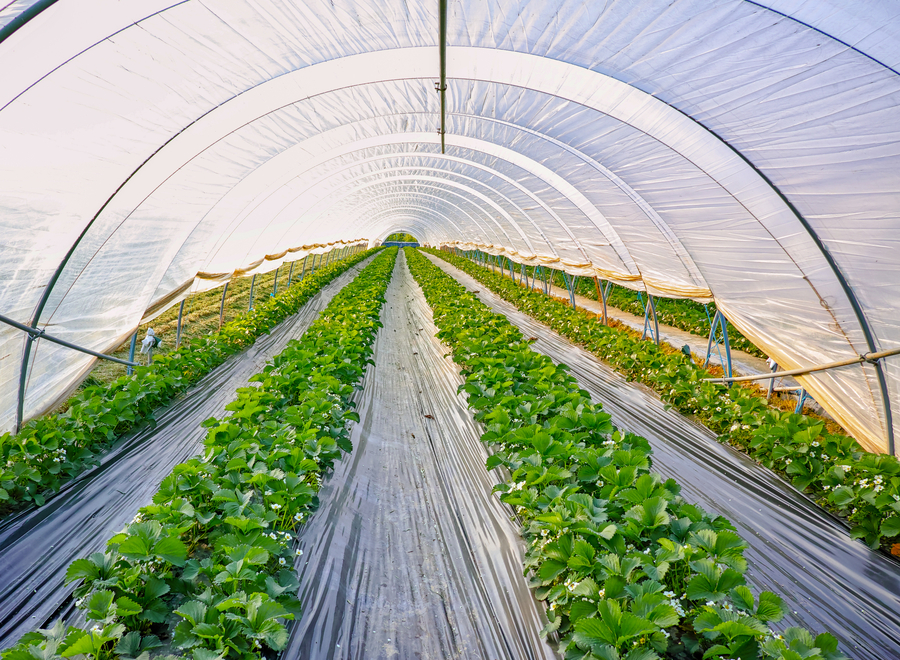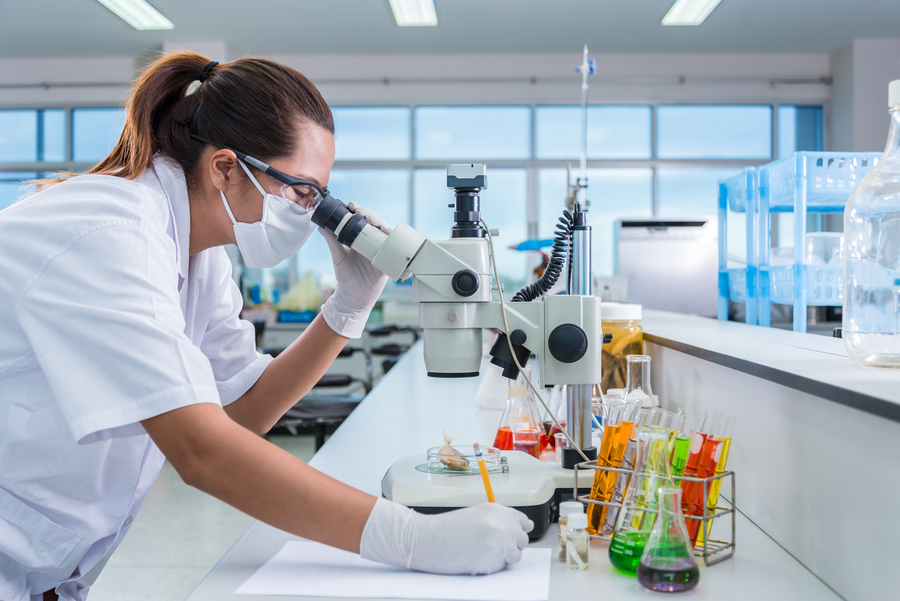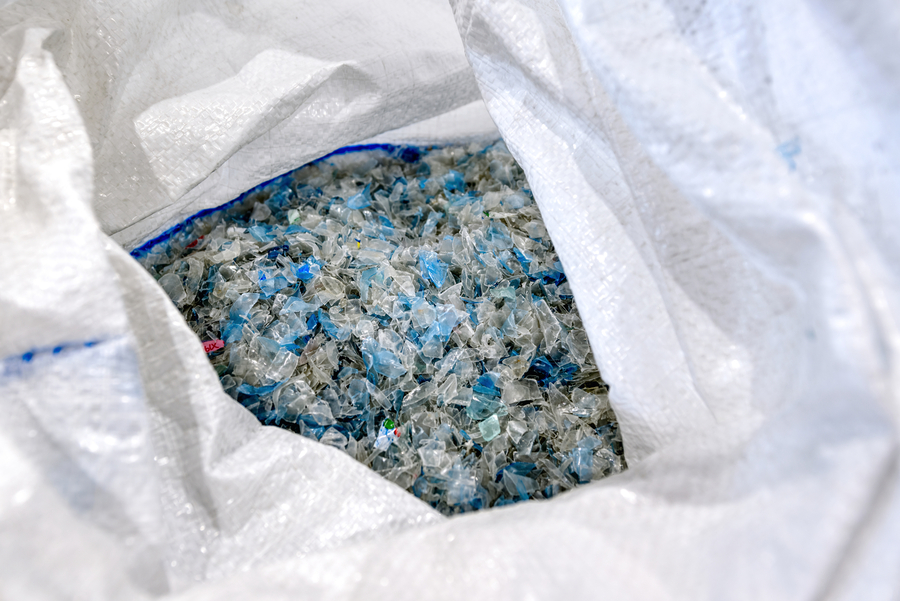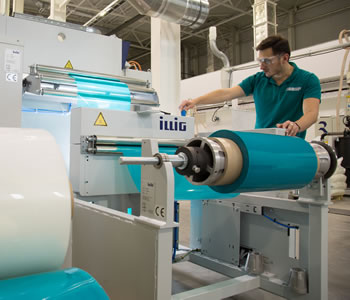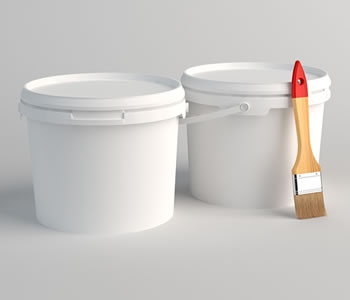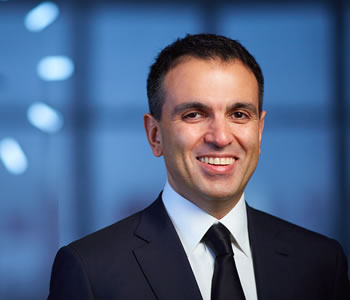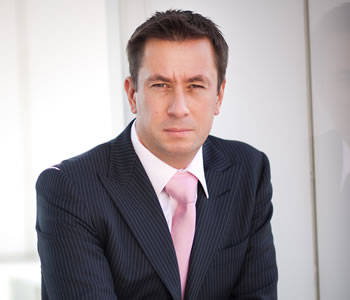SIBUR International GmbH Executive Director Andrey Frolov sat down with the magazine Expert to discuss how his company sees its activities in the international market, how it can compete against global petrochemical giants, and how SIBUR’s business will change with the rise of green technology.
SIBUR started to scale up its international trading about a decade ago in parallel with the design of a new greenfield facility. Today, SIBUR International, SIBUR’s export arm, has four offices in China, an office in Vienna to cover all European countries, and a revamped office in Istanbul to supply not only the Turkish market, but also the Mediterranean North African countries, India, Latin America and other markets. The company’s aggressive expansion into the international market with a refreshed product portfolio is part of the transformation journey of the whole of SIBUR. “Over the past fifteen years, we have gradually transformed fr om an almost pure-play energy business with an overall financial result driven largely by energy products into a traditional petrochemical company that sees more than half its revenue coming fr om further downstream,” says Andrey Frolov, Executive Director of SIBUR International GmbH.
Our main objective is to supply the needs of the domestic market. This isn’t just out of patriotism – the domestic market offers higher margins due to a shorter transport leg. However, the Russian market is yet to create any meaningful demand for advanced grades, so exporting them remains a more viable option
– What challenges does SIBUR International face? What percentage of “SIBUR at large’s” revenue comes fr om exports?
– SIBUR International is a SIBUR subsidiary, through which it sells all its export products, excluding direct sales by its head office in Moscow, which mainly go to the Customs Union and CIS countries. I estimate the share of export sales in SIBUR’s total 2020 revenue at about 50%.
– Why has SIBUR recently started to place a stronger focus on exports?
– First of all, there have been shifts in SIBUR’s product mix itself. Over the past few years, we exited a number of assets; for example, we sold our synthetic rubber asset in Tolyatti, which for various reasons was a poor strategic fit with SIBUR’s long-term growth plans. At the same time, we not only put into operation our largest complex towards the end of 2020, ZapSibNeftekhim (ZapSib) in Tobolsk, but also launched a number of modern facilities in Perm and Voronezh. ZapSib represents a capacity addition of 2 mtpa of polymer products, mostly destined for export. These products have largely replaced exported liquefied petroleum gases (LPG) in our product portfolio – we now process them into final products ourselves.
And secondly, our domestic, Russian market, which is by default no match for the global market in terms of its size, experienced a significant slowdown in demand in certain industrial segments due to recent macroeconomic headwinds. Look at how it played out for the automotive and auto component industries, consumer goods, construction, fuel industries, and so on – almost all the sectors that consume our various solutions. And this situation is not unique to Russia – the entire world is now experiencing the same kind of crisis.
Our main objective is to supply the needs of the domestic market. This isn’t just out of patriotism – the domestic market offers higher margins due to a shorter transport leg. However, the Russian market is yet to create any meaningful demand for advanced grades, so exporting them remains a more viable option. So far, we are planning to export about 1.5 million tonnes of ZapSib products, focusing on gradually shifting volumes to the domestic market as demand there grows.
Synthetic rubber production at SIBUR’s plant in Krasnoyarsk.
– What are your export plans for other products this year?
– We have curtailed our export programme for LPG and related gas products to about 2.5 million tonnes. Rubber exports are expected to hover near 260 thousand tonnes amid shifts in our own product portfolio. Organic synthesis products – or “intermediates”, as we call them – will add about 360 thousand tonnes to total exports. The biggest growth will come, however, fr om polymer products: we are looking at nearly 1.8 million tonnes in total of polyethylene and polypropylene of different types, including production fr om newly-commissioned capacities.
With our new production facilities coming online, Russia has, for the first time in a long period – if not in its entire history, joined the top 10 global producers of basic polymers
– If we look at the global market in terms of your export product mix, wh ere does SIBUR stand? What is its market share?
– Let’s take our current largest export category by volume – polymers. Our total production capacity, including shares in various joint ventures, exceeds 3 mtpa, of which, as I have already mentioned, no less than half is slated for export. At the same time, the global consumption and processing of those same polymers run into the hundreds of millions of tonnes per year. In other words, on a global scale, our market share is probably a few percent at the most. Nonetheless, this is already a meaningful percentage. Today, SIBUR is one of the fastest-growing companies in the global petrochemical industry. With our new production facilities coming online, Russia has, for the first time in a long period – if not in its entire history, joined the top ten global producers of basic polymers.
– And what is the situation like with other products?
– Other markets vary by size, and the situation looks different from one to the next. For example, we recently discussed a contract for tens of thousands of tonnes of annual rubber supplies with one of our major clients, a tyre manufacturer. This is a significant part of our export portfolio for this product group, while for this particular client, these volumes look like a very modest share of its total consumption, which tops one million tonnes annually. To summarise, although we are a leading player in Russia, globally we are still just trying to find our place in the global value chain – today we hardly account for more than 2% to 3%. I am not talking just about polymers, but about the petrochemical industry in general.
– Who is your competition? What companies have significant market shares globally?
– A range of companies – both well-established producers of bulk petrochemicals, such as BASF, LyondellBasell, Borealis, SABIC, Dow, INEOS, Shell, as well as niche players in some segments of global industry. As a rule, the most successful ones are either upstream-integrated or are a petrochemical arm of a gas or oil major. This is the case with one of our shareholders – China’s Sinopec. I would guess that some of them have market shares running into the tens of percent of the entire market in terms of production and sales to certain segments. Overall, market concentration is quite high – I think the twenty or thirty largest companies account for about 80% of the total market. One of the reasons for this is the industry’s high capital intensity and long payback periods.
Shipment of polypropylene at the logistics hub in the Kaluga Region.
– Export-wise, are polymers attractive only because they offer higher margins as compared to gases, liquids or semi-liquids?
– Yes, but there are also additional factors at play here that make polymers a more attractive export option vs. other products. Physically, they are granules, which are easy to pack, stockpile, move and store; unlike, for example, LPG, which requires special tanks and a pipeline system and is transported in special rail tank cars or shipped by gas carriers. In contrast, polymers can be loaded into any multi-purpose container and shipped to any destination by any available transport mode, while also avoiding empty runs through back-loading, which is not the case with LPG.
Packaging and healthcare as the industry’s growth engines
– How can you be sure that with new facilities coming online you will be able to quickly ramp up your export sales?
– SIBUR has been thinking ahead about ways to build its export capabilities for a while now, starting to explore its options as soon as it began considering a theoretical option of attracting investment into another project to add new capacity. Even financial institutions request information about projected sales stability and manageability when considering a loan for any new plant project – to ensure the repayment of borrowed funds.
– We have put a lot of effort into building a “customer funnel”. We used to have an internal metric that had to do more with psychology: we assumed that if we could attract potential customers with consumption volumes at least triple the amount we needed to sell, we would feel confident that all our tonnes would be sold.
A major competitive edge is driven by different kinds of services – technical, logistics, financial and so on. We deliver a customs-cleared product, sell it to the client in their local currency and support the sale with a convenient financial instrument. It’s customer service in the broad sense of the word
Delivering our new product to our target customers was a completely different story, though, so we actively tested our distribution network, closing the gaps wherever we identified them. For example, to support the construction of ZapSib, which I mentioned before, we built a logistics platform in the village of Vorsino in the Kaluga Region to provide an intermediate storage site for the products produced in Western Siberia, ready for onward shipping in the chosen form – in bulk or packaged – to any destination. Apart from that, we have long adopted the practice of engaging professional plant logistics companies to support our production sites. By way of illustration, a flow of pellets coming out of a pipe is picked up by a logistics operator, responsible for the further handling of the product: packaging, stockpiling, bringing flatcars, trucks, offloading, etc. – all related services.
– So, you outsource your logistics?
– To a large extent, yes. We work with professional logistics companies engaged via a bidding process, and they take over functional services that are non-core to our business. Typically, they are companies with an international track record, and they enable us to remain transparent and competitive in the market, and also secure offloading and subsequent delivery services.
Another aspect of premarketing is the quality of the product itself, because part of the product range we introduced last year is new to us. For example, we did not have high-density polyethylene before, so, even when our own product was not yet available, it was important for us to have our potential customers take a similar product produced with the same technology and try it out internally to understand whether they were happy with it in principle. To do this, we requested available products from our licensors (companies providing production technologies for relevant products), who fetched them from similar producers for laboratory or industrial testing with our potential customers. If a licensor could not provide the requested product, we would purchase it on the market from our future competitors or traders, send it to our customers with an invitation to try it out, saying we would get back to them later with a similar product of our own.
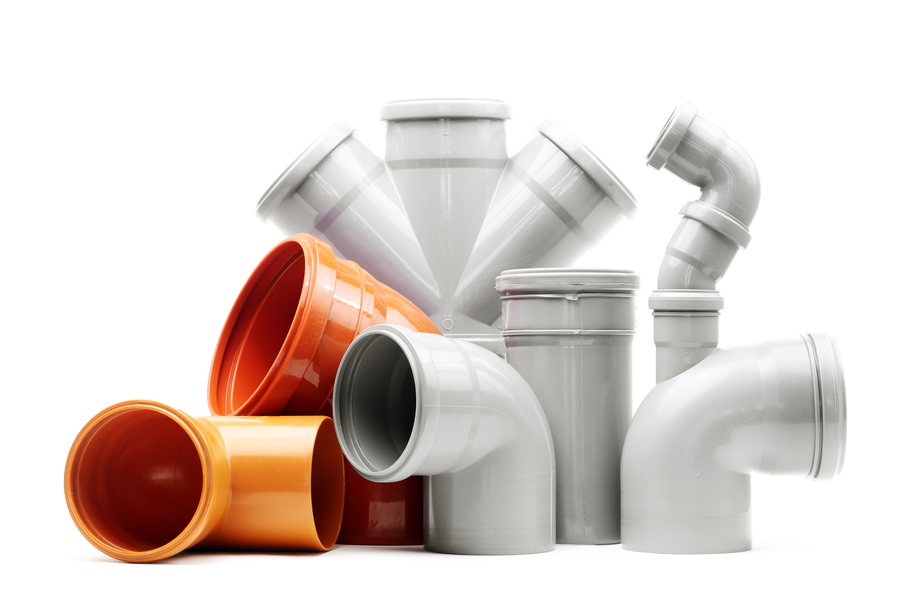
SIBUR polyethylene is vital for the production of pipes.
– What is the share of these kinds of new products in your polymer export portfolio? And what are these products, apart from high-density polyethylene?
– Most of our grade assortment will be made up of new products. For instance, the Innovene technologies used at ZapSib have enabled the production of some of the most advanced grades of polyethylene for pipes, while gas-phase technology provides significant flexibility in the production of low-density linear polyethylene grades. Polypropylene production technology will maximise production diversification and enable new portfolio additions, such as impact polypropylene-ethylene copolymer as well as thermoplastic grades. All these pellets are subsequently used in various products consumed by households and in industrial manufacturing – the production of films, pipes, injection moulded products and so on.
– What is the geography of your exports? Did it change post ZapSib launch?
– When we commenced the construction of ZapSib, we projected that key supplies would be distributed between Europe and China, with some supplies going to Turkey. In the first nine months of 2020, about 75% of our polymers were exported, with around 55% to 60% of the products sent to China and the remaining volumes going to CIS countries or Western Europe. When the plant was fully commissioned, amid all the macro headwinds last year that hit the European polymer market the hardest, our main flows went to China, though at the same time the Turkish market posted surprise windfall sales as we captured more demand than we had expected.
The Innovene technologies used at ZapSib have enabled the production of some of the most advanced grades of polyethylene for pipes
– What was the reason for China posting windfall sales – production there had also been halted across the country? Did your minority shareholder, Sinopec, help you in driving sales?
– You can’t really say that China posted windfall sales; it’s just that our sales plans for the world’s largest polymer market were initially more modest. And the pandemic-induced production shutdowns were also imposed in China, but the Chinese market recovered faster than others from the first wave of the pandemic. In this regard, our Sinopec partners had their own mission within our distribution agreement for polyethylene sales.
– What is your polymer customer mix by industry? Which sectors hold the most potential for you today?
– At least a third of total volumes is sold for packaging in its various types, and about a quarter goes to various FMCG products, followed by construction, healthcare and many other segments with a smaller share. Clearly, packaging was hot last year as product manufacturers and shippers shifted to stricter delivery and sanitary protocols for various products. This required a greater variety of film solutions – thin-walled packaging of various types.
Healthcare was the other growth area. Our polymers are used in the production of clothing for medical staff, absorbent hygiene products – nappies, sanitary products, etc., medical equipment and medication packaging. Packaging and healthcare – these are the two sectors that showed significant growth in 2020.
From commodity alliances to alliances with compounders
– What could be your company’s competitive advantage in the global market? It clearly is a highly competitive market, and new entrants struggle to gain a foothold.
– To start with, in my opinion, we believe that our production is quite advanced technology-wise, which means we offer a solid, competitive product that is recognisable in the market and meets modern quality standards.
The second big advantage is that we believe we are quite competitive in terms of unit costs per tonne produced vs most other global manufacturers. Although, there is certainly room for improvement: the competition is only set to grow, and we need to rank in the top or second quartile of efficient producers for each product.
In my experience, it is extremely rare for a manufacturer themselves to come up with a unique molecule from scratch and then evolve it into some kind of clear breakthrough or a revolutionary product. In petrochemicals, it’s usually the other way around, it’s a customer-driven process
Next, a major competitive edge is driven by a variety of services – technical, logistics, financial and so on. We deliver a customs-cleared product, sell it to the client in their local currency and support the sale with a convenient financial instrument. It’s customer service in the broad sense of the word. In this regard, we aim to transform from a Russian manufacturer entering the export market into an international company with a wide regional footprint adapted to the needs of each local market.
– What is your approach to pricing? Is the “working at a loss to win the market” an acceptable strategy for you?
We sell at a regional market price that is specific to a particular niche, product and point in time. If you look at our financial results over the past 10 years, our EBITDA margin has always hovered around 30%. At the same time, the margin profile varies greatly across the wider product basket, depending on the life cycle stage of the product in question. Price here is context-driven, determined by the number of players in the market, their product offering in a given niche, the size of the demand for feedstocks, and the quality of products our competitors can produce at their facilities. We keep a close eye on how individual segments evolve in terms of product viability and profitability. What’s more, we always have a plan B, meaning we can always, roughly speaking, shuffle around molecules from one product to another. For example, we can stop making a certain type of butadiene rubber that has fallen in price and start selling butadiene itself. Or, we can start to produce a different type of rubber using spare capacity, if it offers better monetisation from our raw materials. This is a very exciting mechanism for product assortment management. But the core pricing principle is inherently market-based.
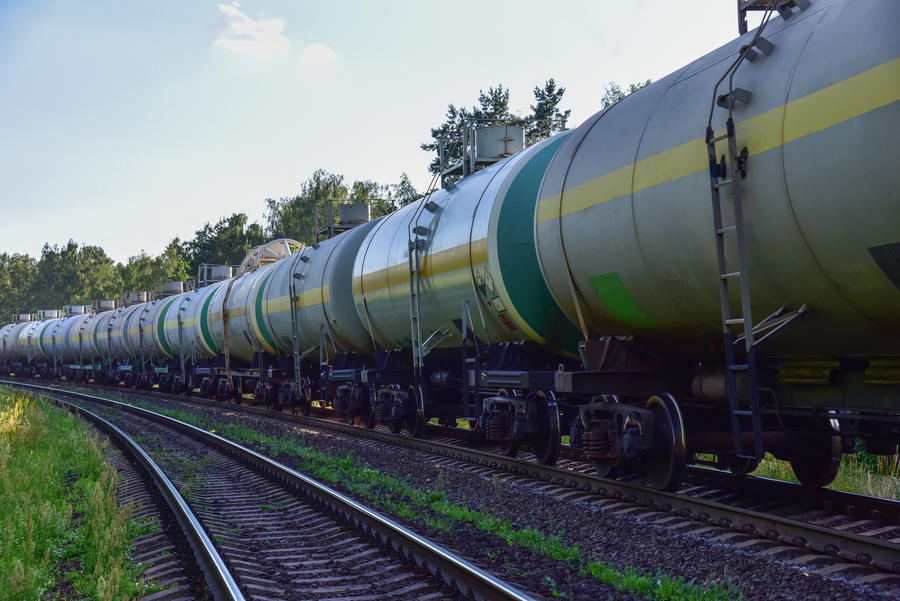
Today, LPG is becoming more of a product for deep processing than a product to sell.
– How do you manage to keep costs at an acceptable level – is this achieved at the expense of production costs or logistics?
– Our logistics are not cheaper, because the geography is such that, on the one hand, we are protected in the domestic market from huge import inflows, but on the other hand, we have to pay a premium to export polymers from Western Siberia to our target markets. In this context, our price competitiveness in the global market is driven by our long-term upstream integration with oil- and gas-producing companies. The former produce associated petroleum gas (APG), which they traditionally burn in flares and which we have been able to monetise by expanding our processing capacity in Western Siberia. The latter produce NGLs (natural gas liquids – Expert), which they treat as a by-product and we use as the key raw material for fractionation to produce feedstocks for further processing into polymers and other products. And we can’t forget about the efficiency of our production facilities, which required over RUB 1 trillion of capital investment over the past 10 years to construct and upgrade.
– In the end, are we talking about lower raw material costs for you? What does this integration mean?
– It covers SIBUR’s capital investments over previous years: gas processing facilities near core fields, a pipeline network to supply NGLs and multi-year feedstock supply contracts with oil and gas companies. At first, we supplied available feedstocks to our gas processing and gas fractionation facilities (separating APG or NGLs into individual fractions) and focused mostly on LPG sales. Today, we have moved further downstream and use LPG itself to produce more advanced products.
Energy efficiency, greening and environmental friendliness – we cannot remain in denial. The companies that try to avoid getting involved in this effort are already starting to lose out in terms of competitiveness vs their peers
– But your competitors, who are often part of large oil or gas companies, are sure to have the same integration with upstream.
– They do, but many adopt a different strategy – some see themselves as a multimillion-dollar bulk polymer story; others, on the contrary, choose to be a pure specialty play, like BASF. Suppose a company positions itself in the market as a chemical player, rather than as a petrochemical company. Rather than just offering standard grade polypropylene, sold everywhere and anywhere around the world as a commoditised product, it can, for example, approach a manufacturer of bumpers for BMW or Mercedes-Benz, ask them for a summary of the physical and mechanical properties required for a bumper and then make a product tailored to fit the potential order by customising and enhancing its existing polymers. Since this is obviously a higher conversion stage than for traditional polymers and entails additional costs and the development of a unique product formulation, they ask a completely different price for the product. Such niches are orders of magnitude smaller in size than bulk polymer segments, but we are talking about creating high-margin, high-tech products.
– Are you focused on bulk polymer supplies?
– Yes and no. We compete in some segments, including by leveraging our upstream integration, good production technology, customer service, logistics, etc. And in other segments we offer certain unique product solutions, which we can afford as a manufacturing company. In the first case, we are talking about production cost efficiency and purely market competitiveness. Here, we see competition in the market against less efficient producers, which typically lack upstream integration and have smaller, isolated facilities and, consequently, higher unit costs per tonne produced. This trend has already been highlighted by the shutdowns, closures and exits of older, smaller facilities from the market, including in Eastern Europe.
SIBUR often studies and modifies the properties of polymers, even when the end user of the product is not aware. For example, a farmer buying film with characteristics that depend on the properties of the granules.
– What do you offer in terms of new unique products?
– Let’s take as an example, say, the agricultural polyethylene films segment, which has historically been a major business for us. A farmer approaches our client, a film producer, and says he is no longer satisfied with the product because it is too cloudy; he needs it to be more transparent, because a more transparent film lets more sunlight through and this has a direct impact on increasing yields. He says, “I will no longer buy cloudy film, but there is a product on the market that has a higher transparency index, and if you want me to continue purchasing from you, come back to me with a similar product.” We take these terms of reference to our production site laboratory, and we start to solve this problem chemically by adding all kinds of additives to the polymer to achieve the desired transparency. Then we look at what it might cost us when scaled up to a commercial level by engaging film producers, who convert the polymer into film, and after getting the product from them, we pass it on to film consumers for testing.
At least a third of total volumes is sold for packaging in its various types, and about a quarter goes to various FMCG products, followed by construction, healthcare and many other segments with a smaller share
– Another farmer might say, “For me, film transparency is not important, but its resistance to breaking is what matters, because wh ere I live the wind is so strong that it breaks at the slightest bit of tension. I need it to be many times stronger than what you offer now.” A third says, “I make bags out of film, and I need the film to be slip-resistant when bags are stacked onto pallets, so I need you to focus on the film’s anti-slip performance.” A fourth says, “It is critical for the film to have no odour at all, because I’m going to use it to make small bags for a grocery chain.” In this way, new terms of reference can emerge for us in any area.
– Is there an opposite story – when you try to create new products yourself and offer them to the market?
– In my experience, it is extremely rare for a manufacturer themselves to come up with a unique molecule from scratch and then evolve it into some kind of clear breakthrough or a revolutionary product. In petrochemicals, it’s usually the other way around, it’s a customer-driven process. Let’s put it this way, what do prospective tyre manufacturers need to achieve to supply tyres for a new car model? They need to target a low noise level, high wear resistance, and make them non-skid, frost resistant, and so on to define the terms of reference. Then other requirements are added, say for speed index, load index, and a range of other technical requirements that are not too familiar to a layman. And then technical tyre experts develop a rubber compound formulation according to these terms of reference, while suppliers of rubber to be used for this rubber compound try to identify rubber molecules to match this compound. And this whole process can sometimes run into the years: a tyre that makes it into bench testing should already have passed an 18 to 24-month lab testing cycle.
– But then shouldn’t you be interested in growing the sales volume of this new product, otherwise what are you going to do with it? Surely you need to have more than one customer, right?
– Yes, from an entrepreneurial point of view, you can and should modify a product as long as you more or less understand the size of the potential upside against unit production costs of a new molecule. Otherwise it’s an accessory story, a waste of time and money in disguise. But in practice, further down the road, management comes to a crossroads.
We sell at a regional market price that is specific to a particular niche, product and point in time
The first option is to tweak the product in-house, on your production site, wh ere your technology allows you to work with the material itself, modifying or improving it in some way – that’s the first path. And the second option is cooperation with so-called “compounders”, who take the starting material from basic petrochemicals producers to work with it, improving the polymer properties to achieve the target level at their own production facilities. These companies have more compact and technologically flexible operations that are adaptable to new equipment, which could potentially be purchased. Their production capacity and scale are many times smaller than large, bulk production lines comparable to ours. Do we want to venture into this compounder business and, say, set up a production shop for each particular niche, to fine-tune the production process for a certain product? That’s still an open question for us.
We are definitely considering the first option, whereby we target a handful of meaningful niches while operating our existing equipment with no need for some kind of major technology revamp. Or we could forge alliances with already existing compounders and join forces with them, a move that is constantly being considered and discussed within the organisation. We can, in theory, bring a polymer molecule into a potential alliance. We would see a clear sales market for our polymers, while our partners would be responsible for the specific know-how in the polymer modification and operational management of the improvement process.
Working at a molecular level in SIBUR not only means it is possible to modify the properties of a polymer, but also understand how cost-effective its introduction into production is.
– Are we talking about Western compounders or there are also Russian ones?
– Our domestic market is a priority for us: it is closer, it is more, how should I put it, understandable, historically geared towards us, and mature in terms of our active presence. For this reason, it seems easier to work with. However, the irony is that many successful compounders in Russia are actually localised production facilities of Western companies, for example from the automotive industry, or other sectors like hygiene and medical products. But there are also successful Russian projects that are growing their production of raw materials for road construction, housing and utilities and so on.
From an entrepreneurial point of view, you can and should modify a product as long as you more or less understand the size of the potential upside against unit production costs of a new molecule. Otherwise it’s an accessory story, a waste of time and money in disguise
The rise of the green granule
– The trend for sustainable development and greening is growing rapidly in the Western world, and we are seeing increasingly more pollution-related complaints against petrochemical producers, including ones made against these very polymers. How is this trend already impacting your business, since it directly affects you?
– I don’t see it as a trend, but already as a new normal that is shaping the future landscape of tomorrow’s petrochemical industry. Today, we see trends such as energy efficiency, greening and environmental friendliness. We cannot remain in denial, and companies that try to avoid getting involved in this effort are already starting to lose out in terms of competitiveness vs their peers.
– What are we talking about here?
I will give you a few examples. Yesterday, I saw a social media post by Pepsi about how they are testing bottling their drinks in paper bottles. At the same time, we have a fairly huge product offering – both in terms of size and share of the business – targeting beverage packaging manufacturers. Typically, a standard plastic bottle consists of three types of polymers, and this kind of announcement by one of the world’s largest beverage makers poses a clear threat of wiping out a certain market segment for us.
– Another example comes from late 2020. When discussing a contract for the supply of our polymers in 2021, an Austrian producer of small packaging – plastic containers for food and similar products – informed us that unless we are able to provide proof starting from 2022 that the monomer we use to make polypropylene or polyethylene for food packaging contains bio-components at the molecular level, or that our polyethylene or polypropylene itself contains these components, they will be unable to purchase products from us due to requirements and restrictions imposed by the EU. And we are starting to see more and more of these kinds of stories.
An example of SIBUR’s adoption of a circular economy, is the Green Granule project (secondary PET flakes) at the POLIEF factory.
– What challenges could this pose to you?
– We might need to change our product offering by modifying our own molecules used in production, like in the case of the plastic bottle. Another very hot global trend is the use of recycled polymer and rubber products in the production of some useful goods. We have now launched a project to use recycled, so-called “green” granules (recycled PET flakes) in the production of primary material, the key feedstock in the production of plastic bottles. Our R&D centres, NIOST and SIBUR PolyLab, are strongly focused on the development of new product solutions and polymer recycling methods in cooperation with our clients and research partners.
Our price competitiveness in the global market is driven by our long-term upstream integration with oil- and gas-producing companies
– How should we view these processes?
– What line of thinking would, say, a tyre manufacturer have? He thinks to himself: for a basic rubber compound I need a reclaimed or recycled material with a proven certification of environmental sustainability, and I need to know that it can be incorporated into the starting material with a certain degree of cost-effectiveness. I also need the new rubber compound to have the quality required for new tyre production while also making sure the used material is recyclable in the future.
– Today, most polymer and elastomer producers, including SIBUR, are actively exploring ways to achieve this: how can our products coexist in the market with their potential rivals – recycled materials, and how can we translate this combination of materials into a unique product offering story that would be clear to our recyclers?
– Interestingly, the average person on the street doesn’t give much thought to the real cost of making products from polymers and from traditional materials. Indeed, one can estimate the costs of producing one plastic bottle vs one paper bag, including the impact the production of the packaging itself plus its subsequent disposal would have on the global environment, and again on the environmental conditions in the broad sense of the word.
– Green technology seems to be completely at odds with the nature of your business, your operations, etc. How critical actually is the rise of green technology for you?
– Personally, I don’t look at it only as a risk, not from an “all is lost” perspective, but rather from the perspective of wh ere our opportunities lie, what we need to offer to the market and what SIBUR needs to do in this regard. I don’t see it as a conflict, but as a certain clear signal that in addition to producing tonnes of products and maintaining a sustainable presence in the market, we also need to focus on driving SIBUR’s growth in various areas. As I have already pointed out, we have invested in production in Bashkortostan, wh ere we will use recycled PET to produce primary material to be further marketed. At the same time, we have launched a number of social activities to promote separate waste collection, citing the already-mentioned plastic bottles as a case in point. My personal favourite programme is the Basketball initiative, which we have been running in partnership with VTB United League at basketball games.
Source
Download PDF

